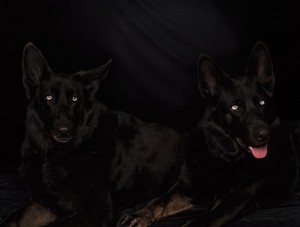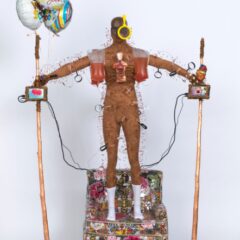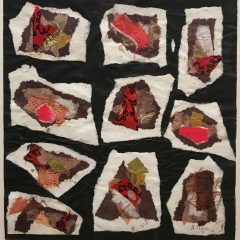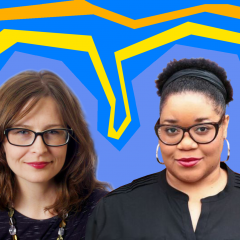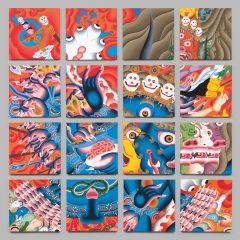The concrete beach was empty — not too many beachballs in play — when Cate, Steve and I arrived in Queens to see Greater New York at PS1. But an hour and a half later when we left, the place was packed for one of the museum’s summer WarmUp concerts. With the music and beer, hammocks and lounge-like atmosphere, the place was festive as a beach club.
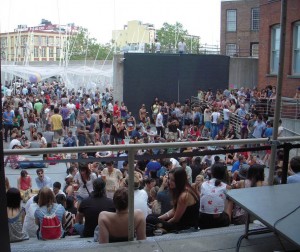
Inside the museum on the second floor, deep in the sprawling 68-artist show, we ran into gallerist Ed Winkleman who, like the postman taking a walk on his day off, was checking out the art. We had a brief chat amidst the carved Architectural Digest-landscapes by Ishmael Randall Weeks. Maybe it’s not polite to talk up one show while seeing another but we spent a little time being very enthusiastic about the Whitney’s Burchfield show.
We also met Dennis Matthews of Grizzly Grizzly whose friend Zak Prekop had paintings in the 5-year roundup of young New York talent. Matthews complained that Zak’s paintings — a series of minimalist grids in muted colors — were near some large, noisy interactive sculptures that people were loving to play with, at the same time that they were missing his friend’s works. Later when we saw Prekop’s works next to Naama Tsabar’s Untitled (Speaker Wall), two large sound sculptures that look like 3D Cubist guitars, we understood how much the painting’s siting was a mistake. Even if the juxtaposition of noisy/quiet was supposed to say something about noise and quietude it turned one artist’s works into dishrags (thank you Alex Katz for the great analogy). Such is life in a 68-artist show I guess.
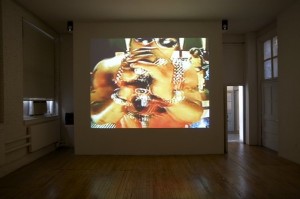
There are a bunch of familiar names here — many of whose work I’d seen at the Whitney Biennial 2010 or the 2009 Younger Than Jesus show. And tellingly, many of the artists in the show are successful and have representation by Chelsea and other galleries.
Works by Rashaad Newsome, Hank Willis Thomas, Kalup Linzy and Latoya Ruby Frazier made the day. Newsome’s appropriated rap video, The Conductor, re-made with a mournful, Arabic-sounding ballad, is gorgeous to look at and plays up the grandly evocative hand gestures of the rappers — which for the first time reminded me of the gestures of religious figures in Medieval and Rennaissance paintings where hands do a lot of the “talking.”
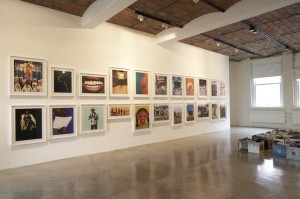
Willis Thomas’ appropriated advertisements targeted to African American audiences or using black models in more widely-targeted ads (Dennis Rodman with a milk mustache) trigger thoughts about the white-washing of American history. Nowhere in these pretty ads is there a hint of discord, poverty, or racial segregation….something advertising can’t and won’t take on. The steady diet of prettified pictures is enough to make you wince. That said, it’s great to see the rise and fall and rise again of the Afro through the years in these pictures.
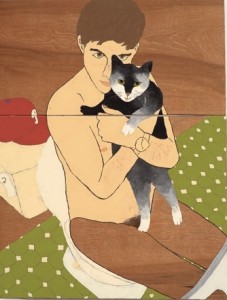
Leidy Churchman‘s paintings on wood with their faux-naive pastiche of grey-bearded seers, rainbows, and in one case, rainbow-colored penises, are playing with gender-bending, and while the deadpan affect and coyness remind me of Elizabeth Peyton and Hernan Bas, the personal mythologizing here seems different. (Note the Phillies’ hat in the background in Hug).
Steve liked what he pegged as the homey Wisconsin ambiance of Michele Abeles‘ photographs. One shows two black dogs in a rich velvety black background; the other is a dense winter woodscape with trees and ground covered in deep snow.
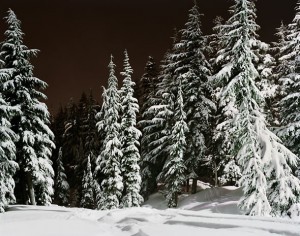
The dogs are perfect for the basement rec room, said Steve, like those paintings on black velvet; and the woods would be perfect above the couch in the living room. I didn’t pick up the homey vibe but the photos surely are working a kitsch angle, the wood scene, for one, a forbidding, evil twin of a Thomas Kincade happy scene.
Some of the room installations fall flat. David Adamo’s Louisville Slugger-covered floor is a unique one-note — it begs to be walked on but gives you little when you do. Dominic Nurre’s Objection Room with its hyena sounds and salt licks on the floor is an obvious torture chamber reference. Kerstein Bratsch‘s decorative repeat color swirls, painted on what looks like plastic sheeting, remind me of Roger Brown‘s patterned skies. But without any content the pieces — some of which dangle in the middle of the room from the ceiling to the floor — are just plain unappealing.
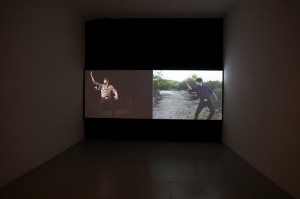
The show is full of videos, from Sharon Hayes’ noisy multi-channel installation of gay rights rallies, to Ryan McNamara‘s videos of a spastic-looking hipster mimicking disco moves, to Tommy Hartung’s 15-minute narrative that should have been scheduled as a movie in a space with appropriate seating. There are always issues with videos in group shows. Hayes’ piece, with its insistent soundtrack, mows down just about everything in its wake, including nearby work. Hartung’s, because of its length and lack of seating, loses viewers.
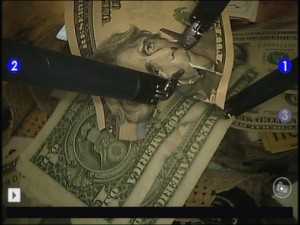
Liz Magic Laser‘s video, Mine, on the other hand, should win an award for subversion. The artist uses the Da Vinci Surgical System to operate on her pocketbook, parsing her cosmetics bag like it’s a big intestine and the contents of the wallet like it’s cancer. Very funny and very smart. And I’m dying to know how she got her hands on the surgery kit. At 22 minutes long, the piece is a movie you “get” in a jiffy, and can linger over if you want to. We moved on after enjoying it in a minute–and will remember it for its unique critique of both our fascination with Nip and Tuck and our love/hate relationship with consuming.
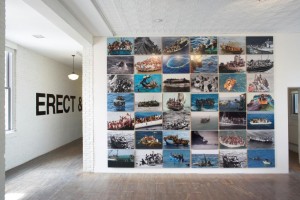
I’ll end with Xaviera Simmons‘ photo collage Superunknown (Alive in The), the first piece I saw in the show — it dominates the reception area. The collage of appropriated scenes of boat-lift peoples through the years focuses on history repeating itself, the same way that art repeats itself. While there’s no Raft of the Medusa in the grid of images it’s there in any art lover’s memory bank of images, anchoring these works not only to contemporary events but to the wars and displacements of people in the past. Nothing is new under the sun but some things are more worthwhile repeating than others. Overall, Greater New York is a great idea and a pretty good show.


